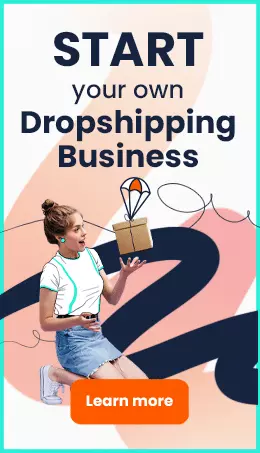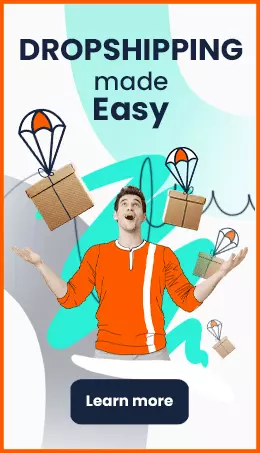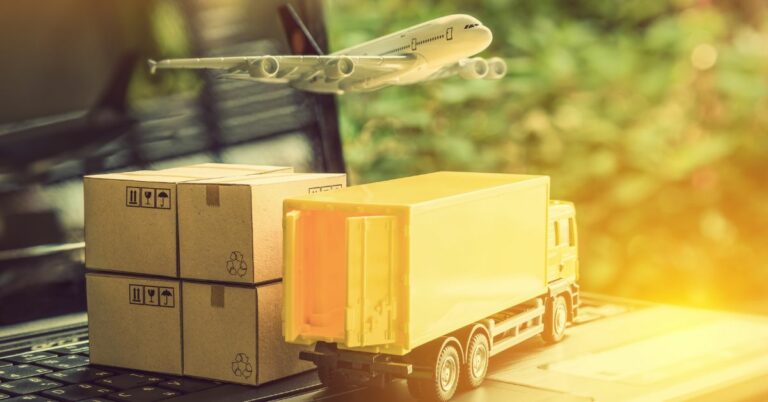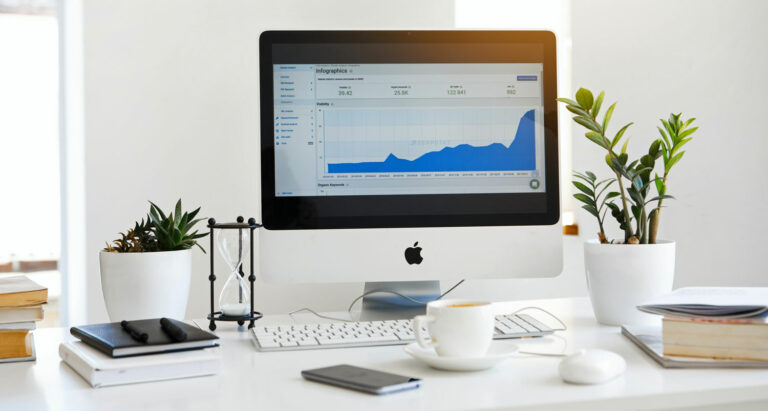Dropshipping is a retail fulfillment process where you – the dropshipper – will buy third-party items to sell and ship to customers. Perhaps the best way to summarize dropshipping would be in the following steps:
- A customer buys a product online from an eCommerce store;
- The store sends the order to a supplier;
- The supplier fulfills order and send the products to the customer.;
- Finally, the shop writes and sends an invoice and a shipping notification to customers.
Now, while dropshippers don’t have to manage a large and changing inventory, they still have to have an effective pricing strategy for their products. If they choose their pricing strategy right, they will successfully earn a profit on every single product they sell.
This guide will walk you through some very interesting dropshipping pricing tips to implement in you marketing your overall strategy.
The Basics Of Dropshipping
“When it comes to dropshipping, how you strategize pricing depends on what you’re selling,” says Geoffrey Collins, a marketing blogger at Origin writings and Brit student. “However, no matter the strategy, there are numerous ways to improve it, even as competition is very high in this business. That means that your pricing strategy must evolve at a given moment. If you have to experiment with different pricing options and or explore new product lines to see what’s successful and what’s not, then do so.”
Some great ways to experiment with different pricing options and product lines are:
- Special deals, coupons, and discounts
- Freebies
- Bundling
- Cross-selling
- Pricing recommendations from suppliers
- Subscription options
Various Factors That Determine Dropshipping Pricing Strategy
To determine your pricing strategy, consider the following factors:
- Audience: Who is your target audience? For example, for wealthier people, you can set prices a little higher than average.
- Perceived Value: What is your product’s perceived value? For example, a neck massager tends to cost more than a neck pillow.
- Elastic Pricing: Are price changes necessary? Is your audience okay with price changes?
- Business Costs: What business costs do you need to earn back? In other words, what do your business expenses look like (i.e email, apps, domain, etc.)?
- Taxes: What is the typical sales tax for your product?
- Marketing Costs: These costs vary, because the more products your sell, the higher the costs.
- Psychology: What prices are customers attracted to?
- Product Costs: Your cost of goods sold (COGS) is an important expense to consider, because that depends on what your customers want.
While a pricing strategy doesn’t guarantee maximized profits, it’s still gives you a good starting point. And, you can always change your pricing strategy later on.
Why Dropshipping Pricing Strategy Matters
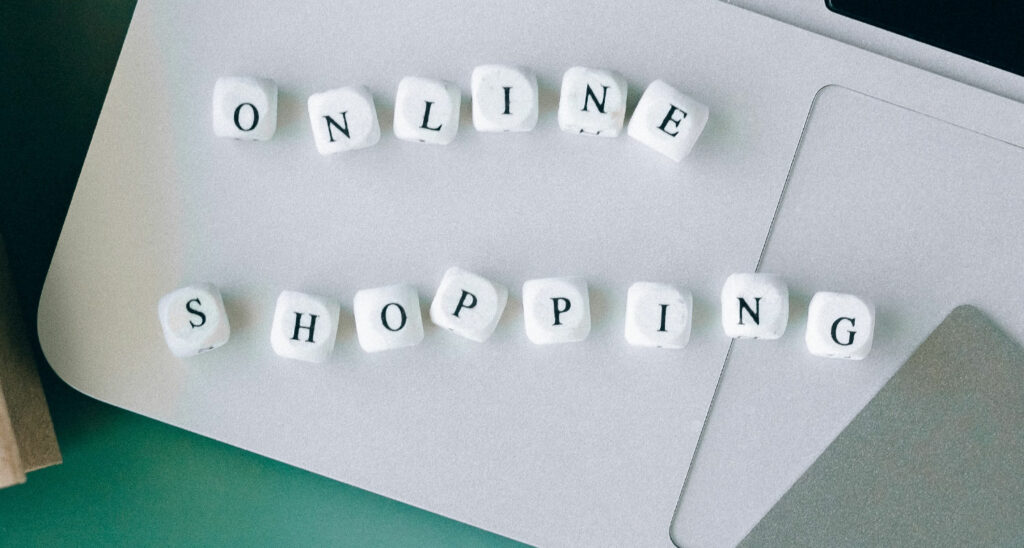
In the eCommerce industry, dropshipping can – and will – continue to be popular, because it’s a low-risk and high-reward model for people wanting to work from home. And, having a pricing strategy can easily be a learning process for beginners.
Without a pricing strategy, one of the following might happen:
- You’ll set your price too high, having you miss out on sales, OR
- You’ll set your price too low, which lowers margins, and has you lose potential profit and revenue.
Plus, having a pricing strategy for dropshipping is essential, because eventually, you’ll have to pay:
- The cost of shipping per product
- A Cost-Per-Purchase model for your marketing costs
- A transaction cost for your payment provider
- Monthly apps fees
- eCommerce platform costs
- Other extra costs
Types Of Dropshipping Pricing Strategies
Since pricing a dropshipping product depends on the product’s price at the supplier, it’s important to know how to price low-ticket, medium-ticket, and high-ticket products.
Low-Ticket Product ($0-$10)
Low-ticket products tend to cost between $0 and $10 from your supplier. So, when considering this type of dropshipping product, consider these aspects:
- Perceived value: Typically, low-ticket products aren’t high in perceived value.
- Audience: Low-ticket products should be sold in huge quantities at a lower price.
- Marketing costs: Reserve 30% of your product’s retail price for marketing costs. This type of dropshipping product is ideal for beginner dropshoppers, since the ad budget doesn’t have to be huge.
Fixed-Dollar Markup
A fixed-dollar markup pricing strategy is often good for really low-priced products. Just add a specific dollar amount to the product’s price. Ideally, try to maintain a $10 profit margin per sale – this leaves some margin for you to pay for marketing costs, taxes, and monthly fees.
Fixed-Percentage Markup
A fixed-percentage markup lets you set your product’s retail price at a certain percentage of your purchase price. Ideally, you may want to set your product’s retail price at 3x (300%) of your purchase price, because that ensures that you’ll have enough margin to pay for all your business expenses.
Free-Plus-Shipping
The free-plus-shipping strategy is where you sell a product for zero dollars, while you only charge the customer for shipping. Since your COGS are so low, this method is ideal with low-tickets products, because you’re only asking for a shipping fee, while providing the actual product for “free.” When they pay for shipping, your shipping costs will be covered for you.
Medium-Ticket Product ($10-$25)
These products will cost you between $10 and $25 from your supplier. As the price range rises, so does your COGS. With that in mind, consider these aspects:
- Audience: Think. Who is willing to pay this price range for a product?
- Perceived Value: If most of your audience aren’t aware of the product yet, you can choose whether or not to set the price at the product’s perceived value.
- Product costs: You can’t go over the maximum cost of a product, or else you won’t profit from it.
Next, we’ll talk about two effective pricing strategies for medium-ticket products: cost-based and bundling.
Cost-Based
Cost-based pricing is when you determine a selling price based on your expenses (i.e. marketing costs, COGS, hosting fees, and app costs). First, you set a lower price, so that you can gather some data on who your buyers are. Once you receive data, you can always change the price, based on buyer behavior. From there, you can target a specific audience who are willing to buy from you.
Bundling
Bundling is a way to lower your product’s retail price, while still profiting from it.
Through product bundles, customers can buy your product (along with a different matching product), and then get a discount for both. But again, that all depends on your target audience.
High-Ticket Product ($30 Or More)
High-ticket products will cost you at least $30 from your supplier. However, such products can be as high as $1.000+. Now, with high-tickets, there are specifics to consider when pricing them:
- Perceived value: The perceived value must be high. And, the product must solve a customer’s problem, in order to justify the high price.
- Taxes: Since your product has a high-value, it must comply with national – and even international – eCommerce rules and regulations. you will have to look into taxes to make sure you comply with all rules.
- Marketing costs: A more expensive product will have a higher marketing cost, since the CPP (cost per purchase) is relatively high for said products. That’s why said products are for more experienced dropshippers.
Perceived Value
With high-ticket products, the brand and the product’s perceived value determines how much you can charge for them. To make your product profitable, consider the following tips:
- Upsell: Let your customer include some discounted accessories with their purchase. (This allows your profit margin and AOV (Average Order Value) to increase.)
- After-Sales: Show customers how the product works, and how they can benefit from it. Also, provide them with 24/7 customer support, in case they have any questions or concerns.
- Customer Engagement: Engaging with your customers in a positive manner keeps them coming back for more – this increases your Customer Lifetime Value (CLV).
Calculating Dropshipping Profit
Now, when it comes to calculating your dropshipping profit, there’s a simple formula for it:
Profit = Total Revenue – Total Expenses
“While knowing your revenue is fairly easy, calculating your total expenses is more tedious,” says Danny Salazar, a business writer at 1 Day 2 write and Writemyx. “Revenue only comes from sales, whereas you have multiple expense sources.”
Normally, you have two types of expenses: fixed and variable.
Fixed expenses are separate from the number of sales you make. Some examples are:
- Shopify
- Apps
- eCommerce services
- Subscriptions
Whereas, variable expenses depend on how many products you sell. Some examples are:
- COGS
- Shipping fees
- Transaction costs
- Marketing costs
- Taxes
Plus, you must consider processing time for dropshipping, since it can be very long or short, depending on numerous factors.
Good Profit Margin For Dropshipping
Once your profit is calculated, you’re ready to figure out a good profit margin. Most dropshippers set their profit margin of 20%. But overtime, profit margins can go up to as high as 50%. However, let’s not forget that this move has to be profitable – and that starts with CLV. The more often a customer visits you and buys from you, the higher the CLV.
Conclusion
So, now that you’re more familiar with dropshipping, perhaps it’s time to give it a try! This is a great opportunity to work from home, or to at least try your hand in the industry, then now it is the time to act!
If you are looking for a supplier who can help you automate your daily business tasks and source your products at B2B prices then Yakkyofy is the perfect partner.
We will help you with everything, from sourcing of your products from some of the best Chinese suppliers up to the delivery to your customers and after sale assistance.
We will give you an all-in-one solution for your business, and you will have:
- A web-app fully connected to your store;
- Real-time B2B quotations for your dropshipping products;
- Markup Automation, you can set rules that will automatically calculate the prices displayed on your store and set your margins;
- Automatic payments thanks to the eWallet;
- Personalisation of your items with your very own logo;
- Customization of your packaging;
- Shipping in over 100 countries worldwide and thanks to our Special Line service, fast shipping in just a handful of days to several countries;
These are just a few of all the amazing services you will get if you sign up on Yakkyofy. So what are you waiting for?
BIOGRAPHY OF THE AUTHOR
George J. Newton is a writer and editor at Write my research proposal and PhD kingdom. He is also a contributing writer for Coursework help. As a business development manager, he helps businesses improve their strategies and concepts.


